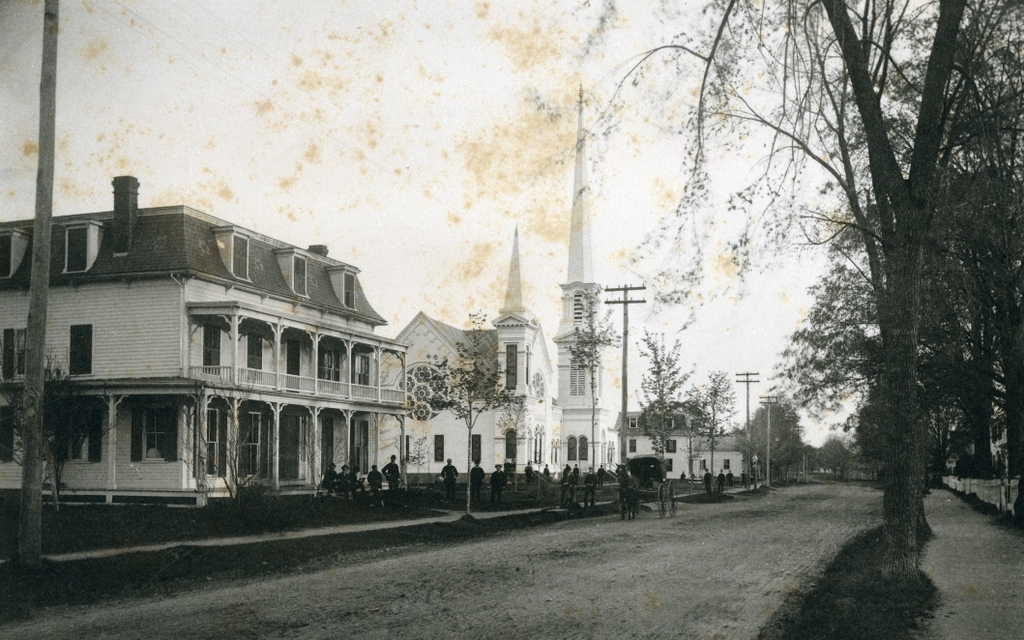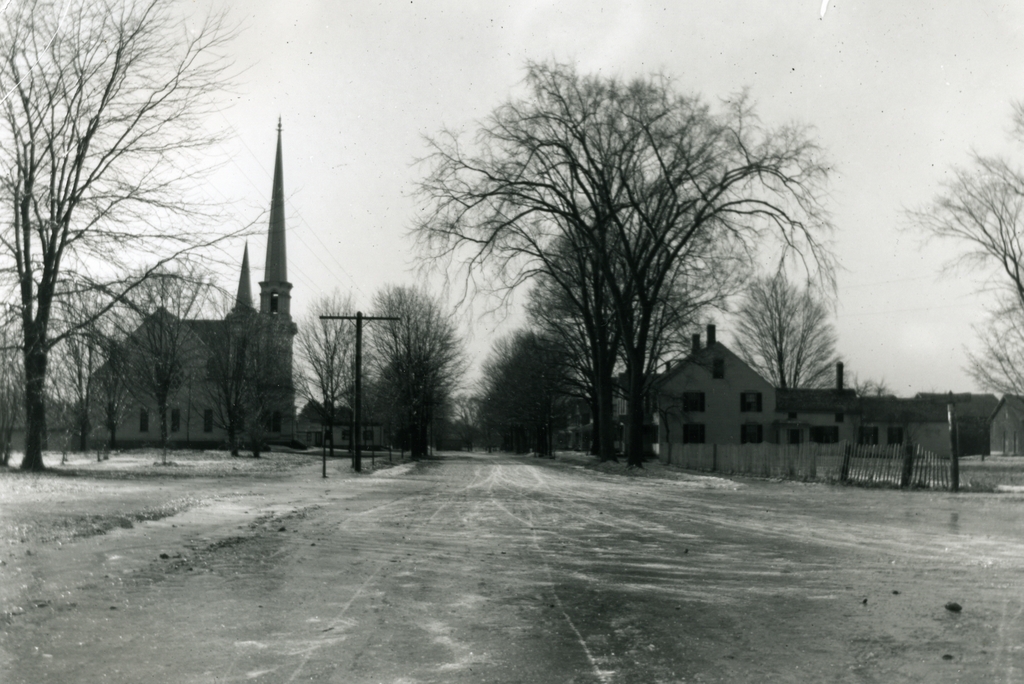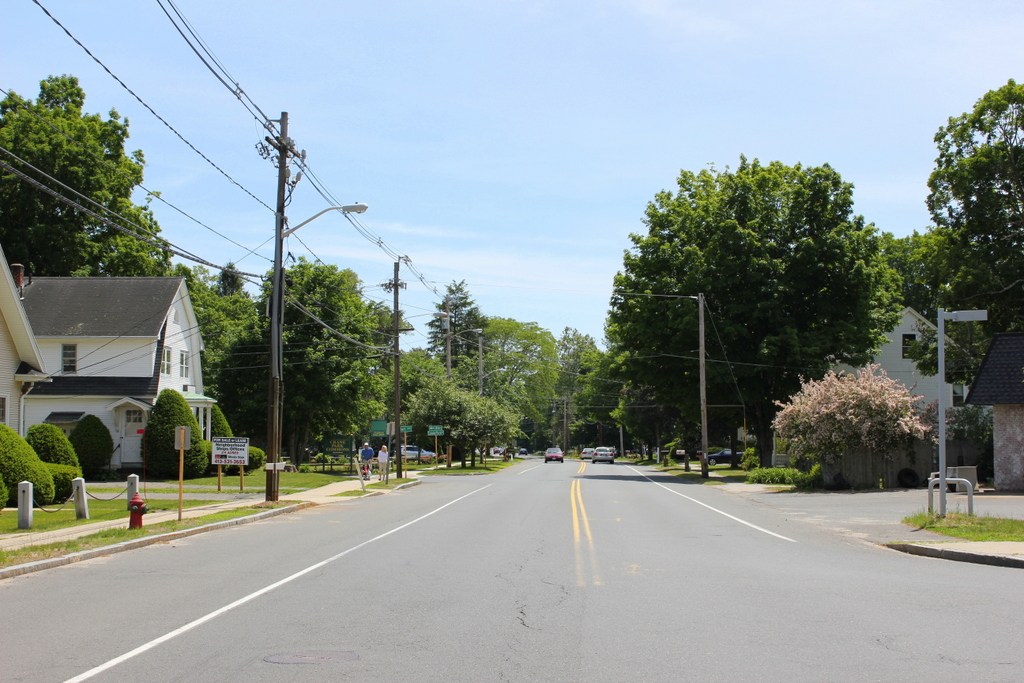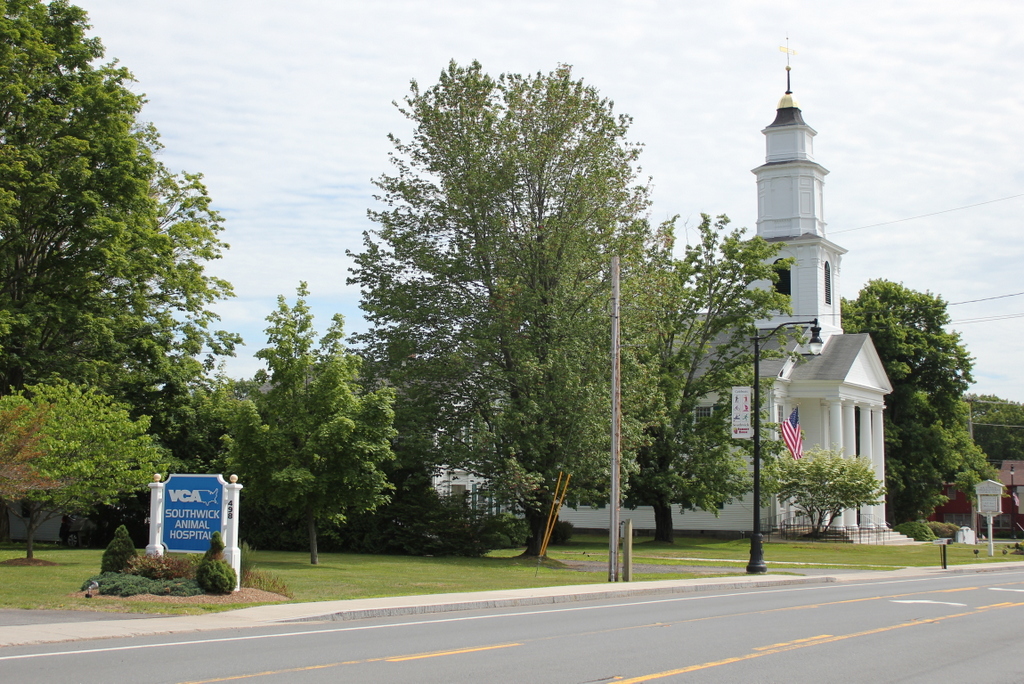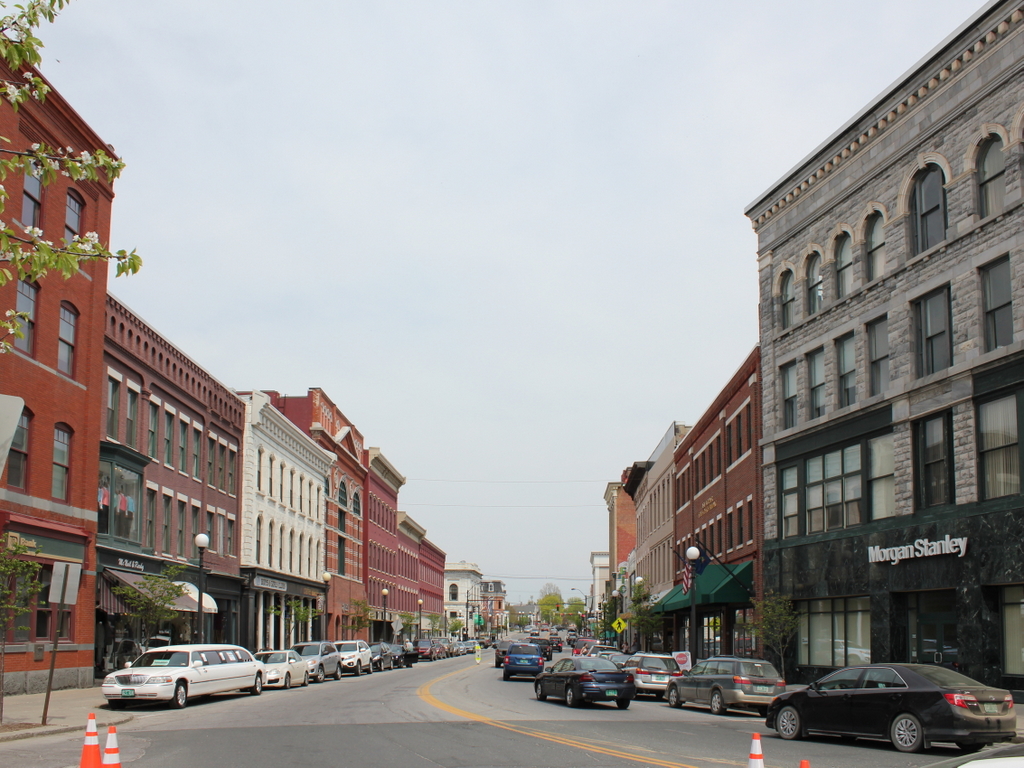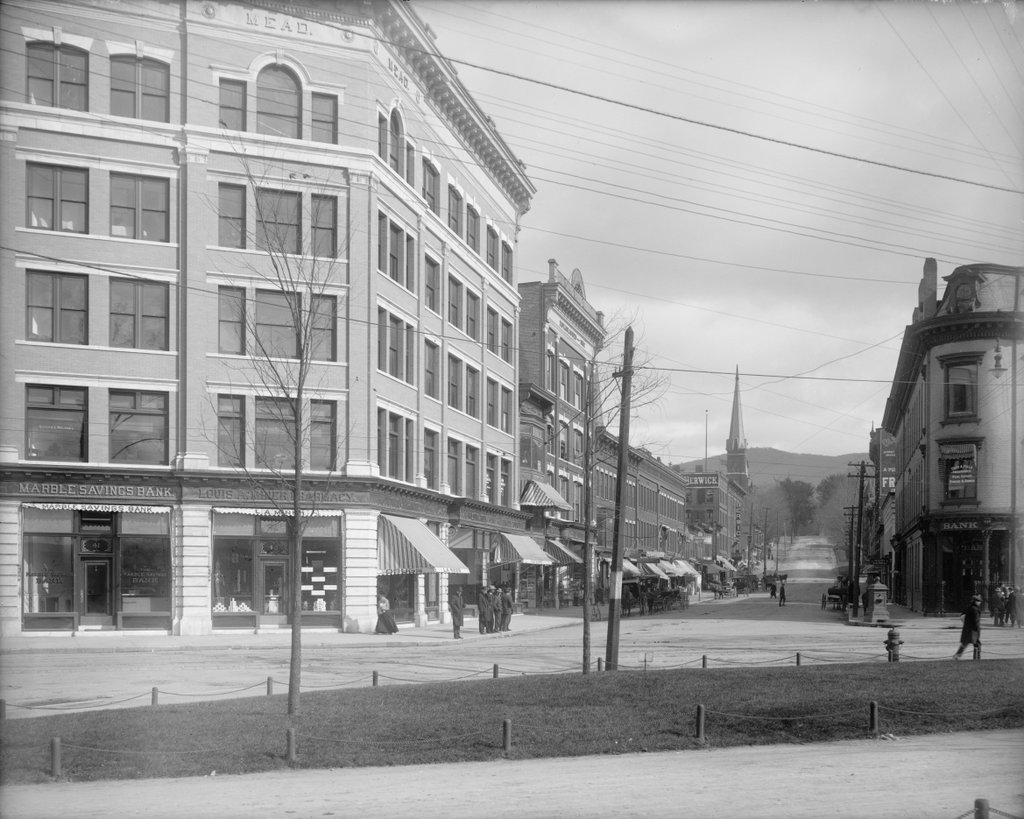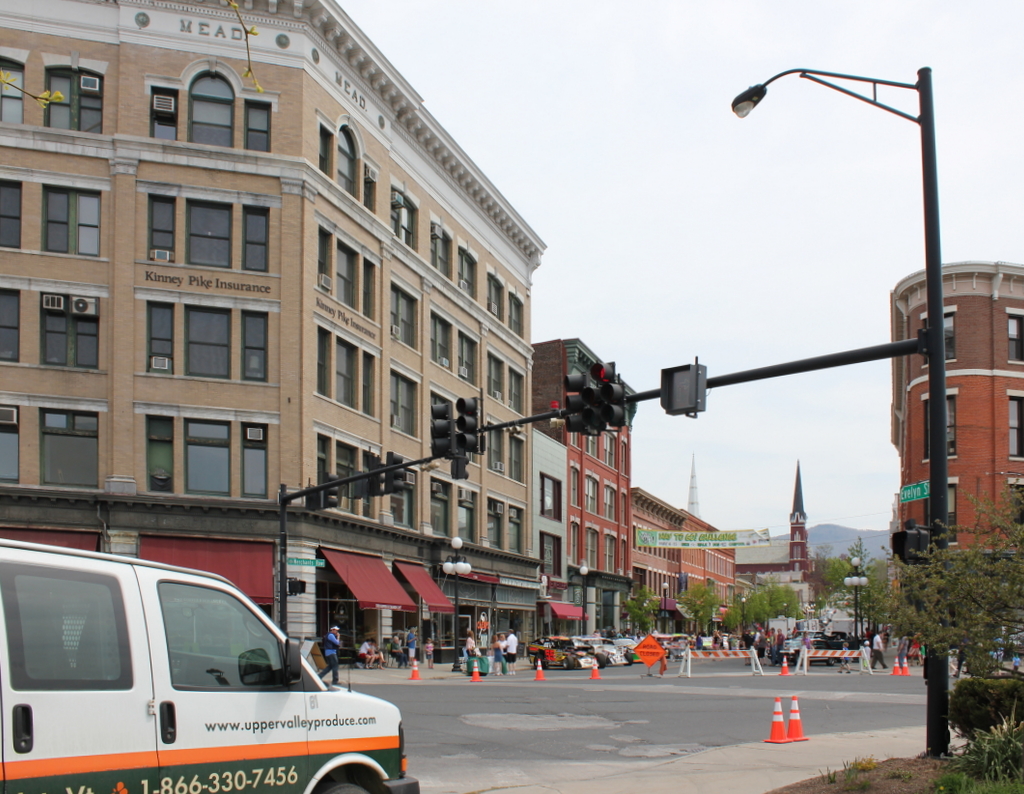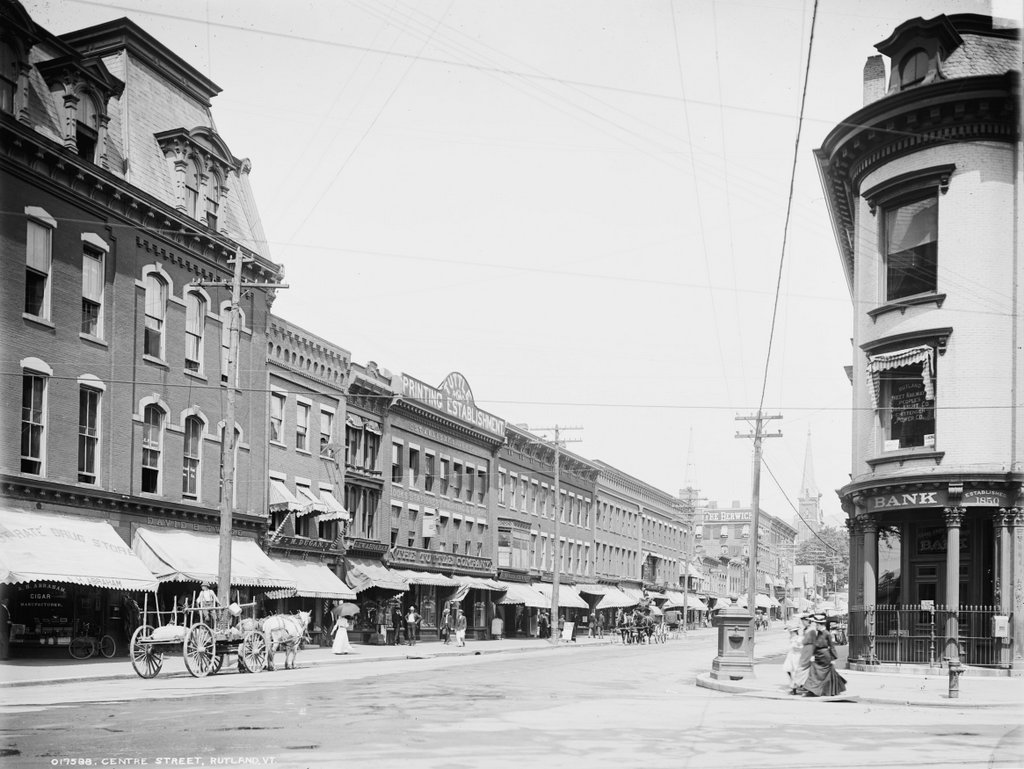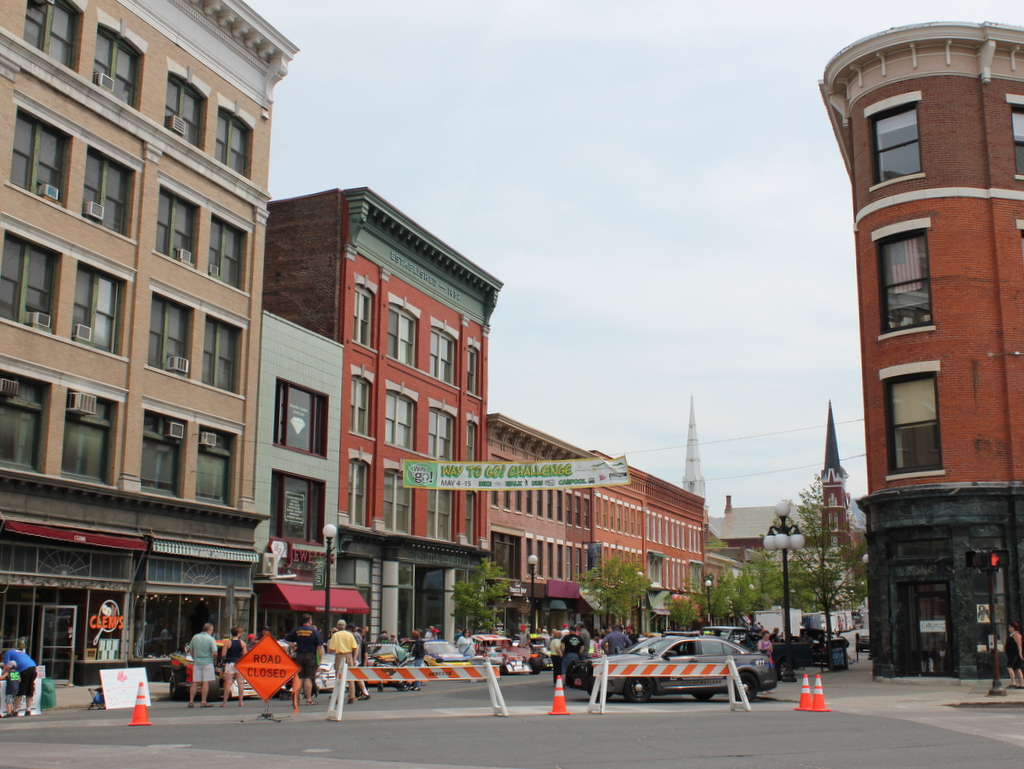Another Main Street view of the Allis House and the First Church, sometime in the 1880s or 1890s. Image courtesy of the Wilbraham Public Library.
Main Street in 2015:

As mentioned in this post, both of these buildings in the first scene were destroyed in separate fires, not too long after the photo was taken. The Allis House to the left was a hotel and tavern, offering accommodations for salesmen and other business travelers as well as providing food and entertainment for locals. It burned in August 1896, but the 1964 History of Wilbraham book suggests that it may not have been accidental; business was apparently declining, and according to a local rumor the resident handyman ran out of the burning building yelling at Mrs. Allis for not telling him when she was planning on burning the place down.
Just under 15 years later the Congregational Church just to the right of the Allis House was also destroyed in a fire, although there was unquestionably no insurance fraud involved here; the steeple was struck by lightning and the church burned to the ground. Today, Gazebo Park is located on the spot where the old church once stood, along with its two predecessors and its successor, before the present-day church was built in 1958 a short distance down Main Street.

